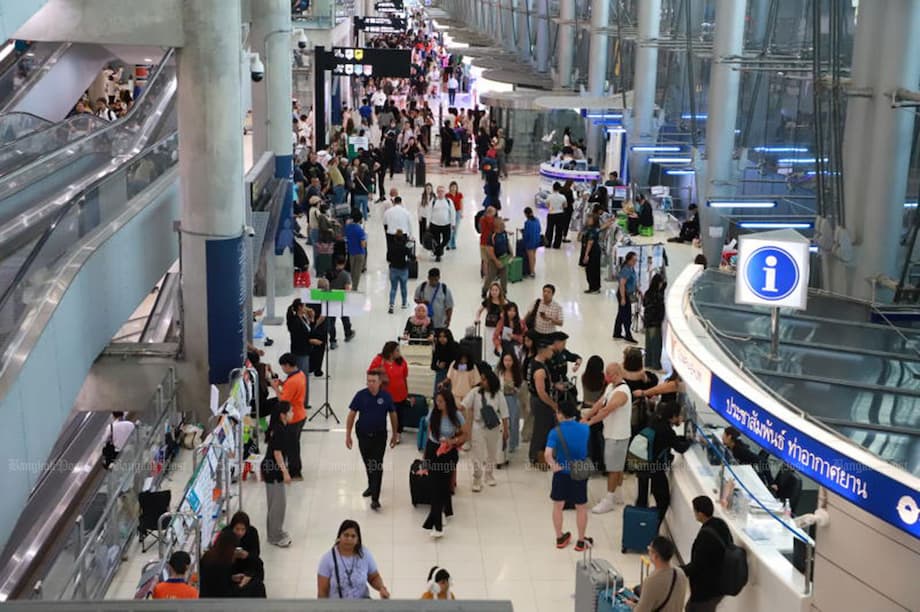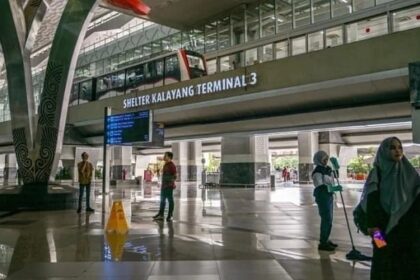Thailand’s Ambitious Free Domestic Flights Campaign: What You Need to Know
Thailand is launching an unprecedented tourism initiative: 200,000 free domestic flight tickets for international visitors. This bold campaign, titled “Buy International, Free Thailand Domestic Flights”, aims to boost tourism revenue, encourage exploration beyond the country’s most popular destinations, and distribute the economic benefits of tourism more evenly across the nation. The program, pending final cabinet approval, is set to run from September to November and is expected to generate over 8.8 billion baht in revenue from a government budget of 700 million baht.
- Thailand’s Ambitious Free Domestic Flights Campaign: What You Need to Know
- How the Free Domestic Flights Scheme Works
- Why Is Thailand Offering Free Domestic Flights?
- Target Destinations: Beyond the Beaten Path
- Implementation, Logistics, and Challenges
- Comparisons and International Inspiration
- What Travelers Need to Know
- Potential Impact and Broader Implications
- In Summary
As the global tourism industry continues to recover from the disruptions of recent years, Thailand’s government is betting on this high-profile campaign to attract more international arrivals and reinvigorate local economies, especially in lesser-known regions. Here’s a comprehensive look at how the scheme works, its goals, challenges, and what it means for travelers and the Thai tourism sector.
How the Free Domestic Flights Scheme Works
The core of the campaign is simple: international tourists who book a flight to Thailand will be eligible for a free round-trip domestic flight within the country, including a 20-kilogram baggage allowance. The offer is available exclusively to those who have not yet booked their internal Thai flights, ensuring the campaign targets new travel plans and maximizes its impact.
Six major Thai airlines are participating in the program:
- Thai Airways
- Thai AirAsia
- Bangkok Airways
- Nok Air
- Thai Lion Air
- Thai Vietjet
Eligible travelers can claim their free domestic tickets when booking their international flights directly with airlines or through major online travel agents such as Expedia, Booking.com, and Skyscanner. Each traveler is entitled to one round-trip (or two one-way) domestic flights, with a government subsidy of 1,750 baht per one-way ticket (3,500 baht for a round-trip).
The campaign is designed to be as accessible as possible, covering all provinces in Thailand, with a particular focus on secondary destinations, UNESCO-listed sites, and regions that typically see fewer international visitors.
Who Can Benefit?
The program is open to international tourists from a wide range of countries, including the United States, Canada, Australia, Singapore, India, Japan, and several European nations. The eligibility is generally tied to visa-exempt or visa-on-arrival agreements with Thailand, making it easy for most travelers to participate. Indian tourists, for example, can enjoy visa-free entry for up to 60 days for tourism or business purposes.
Why Is Thailand Offering Free Domestic Flights?
Thailand’s tourism sector is a vital part of its economy, contributing significantly to GDP and supporting millions of jobs. However, the industry has faced challenges in recent years, including a 7% drop in international arrivals compared to the previous year. As of mid-August, 20.8 million foreign tourists had visited Thailand, with China remaining the largest source market at 2.9 million visitors.
The government’s goals with this campaign are multifaceted:
- Boost overall tourism revenue by attracting more international visitors.
- Encourage travel to secondary destinations beyond Bangkok, Phuket, and Chiang Mai, spreading the economic benefits more widely.
- Alleviate overcrowding in popular tourist hotspots by promoting lesser-known regions.
- Support local businesses and communities in emerging destinations.
- Promote sustainable and inclusive tourism by distributing visitor numbers and spending more evenly.
The campaign draws inspiration from a similar initiative in Japan, which successfully encouraged tourists to explore regions outside major cities. By replicating this model, Thai officials hope to showcase the country’s extraordinary diversity—from tranquil river towns and secluded islands to heritage-rich cities and lush rural landscapes.
Target Destinations: Beyond the Beaten Path
While Thailand’s world-famous beaches, temples, and urban centers will always attract crowds, the government is keen to highlight the country’s “hidden gems.” The campaign specifically promotes travel to:
- UNESCO-listed cities and cultural heritage sites
- Nature-rich northern provinces like Chiang Rai and Nan
- Sports tourism hubs such as Buri Ram
- Riverside towns along the Mekong in Ubon Ratchathani
- Southern islands and beaches, including Koh Samui and Krabi
- Emerging urban centers in the northeast, such as Khon Kaen and Udon Thani
By encouraging visitors to explore these destinations, the campaign aims to foster deeper connections between tourists and local communities, support cultural preservation, and create new opportunities for regional development.
Expert Perspectives and Industry Reactions
Tourism industry leaders have generally welcomed the initiative, though some have offered constructive criticism and suggestions for improvement. Punlop Saejew, vice-president of the Chiang Mai Chamber of Commerce, noted that while the campaign will help tourism, its impact could be greater if launched during the low season, when visitor numbers typically dip. He also highlighted the ongoing challenge of high domestic airfares, which remain a barrier for many travelers.
Rungroj Santadvanit, president of the lower northeastern chapter of the Thai Hotels Association, pointed out that some regions—particularly the northeast—may not benefit as much from the scheme due to lower international tourist interest. He emphasized the need for tailored marketing strategies and events to attract visitors to specific areas, such as promoting sports events in Buri Ram or highlighting natural attractions in the north and south.
Both experts agreed on the importance of ensuring traveler safety and clear communication about which areas are safe to visit, especially amid ongoing border tensions with neighboring Cambodia.
Punlop Saejew explained, “The campaign would be more effective if launched during the low season. The government should also consider allocating funds to help reduce domestic airfares, as high costs remain a barrier for many travelers.”
Rungroj Santadvanit added, “Apart from free flights, authorities should plan marketing strategies and activities tailored to target markets of each location. For example, Buri Ram should promote sports and marathons as a sports tourism hub, while Ubon Ratchathani could highlight attractions along the Mekong River.”
Implementation, Logistics, and Challenges
The campaign’s success hinges on several key factors:
- Cabinet Approval: The Ministry of Tourism and Sports has submitted the proposal for cabinet approval, seeking a 700 million baht allocation from the central budget. The program cannot proceed without this green light.
- Coordination with Airlines and Travel Agents: Close collaboration is required to manage ticket distribution, eligibility verification, and promotional activities. Participating airlines and online travel agents will play a crucial role in reaching potential travelers.
- Infrastructure Readiness: Secondary destinations must be prepared to handle increased visitor numbers, with adequate transportation, accommodation, and tourism services. The government is also investing in upgrades to roads, rail, ferry systems, airport terminals, and visitor centers.
- Marketing and Communication: Effective promotion is essential to ensure international travelers are aware of the offer and understand how to claim their free flights. Multilingual support and clear information about safety and travel requirements are also critical.
There are also logistical challenges, such as ensuring that the free flight vouchers are distributed fairly, preventing misuse, and managing demand so that the campaign does not overwhelm local infrastructure or lead to overcrowding in certain destinations.
Comparisons and International Inspiration
Thailand’s campaign is modeled in part on Japan’s successful “free domestic flights” initiative, which was credited with dispersing tourist traffic away from major cities and into secondary destinations. By following this example, Thai officials hope to achieve similar results—reducing pressure on popular hotspots while giving a boost to regions that have historically seen less tourism.
Other countries in the region have experimented with travel incentives, but Thailand’s program stands out for its scale, ambition, and focus on inclusivity. The campaign is also aligned with the government’s broader policy of declaring 2025 as the “Amazing Thailand Grand Tourism and Sports Year,” signaling a renewed commitment to revitalizing the sector and promoting the country as a top global destination.
What Travelers Need to Know
For international visitors considering a trip to Thailand during the campaign period, here are some key points:
- Eligibility: Book an international flight to Thailand with a participating airline or through a major online travel agent. The offer is only available to travelers who have not yet booked their domestic flights.
- How to Claim: Upon booking, travelers will receive a voucher or code for a free round-trip (or two one-way) domestic flight, including 20 kg of checked baggage.
- Participating Airlines: Thai Airways, Thai AirAsia, Bangkok Airways, Nok Air, Thai Lion Air, and Thai Vietjet.
- Travel Period: The campaign runs from September to November. Travel must be completed within this window.
- Destinations: The offer covers all provinces, with a focus on secondary cities and lesser-known attractions.
- Visa Requirements: Most travelers from key source markets are eligible for visa-free entry or visa on arrival. Check the latest requirements before departure.
- Travel Tips: Dress modestly when visiting temples, carry some cash for local markets, and remain alert to common travel scams. English is widely spoken in tourist areas, but learning a few basic Thai phrases is appreciated by locals.
Potential Impact and Broader Implications
If successful, the free domestic flights campaign could have far-reaching effects on Thailand’s tourism industry and economy. By attracting more international visitors and encouraging them to explore beyond the usual hotspots, the program aims to:
- Increase tourism revenue and support economic recovery
- Create jobs and stimulate local businesses in emerging destinations
- Promote cultural preservation and community engagement
- Foster more sustainable and inclusive tourism practices
- Enhance Thailand’s reputation as a diverse and welcoming destination
The initiative also serves as a test case for other countries seeking innovative ways to revitalize their tourism sectors and manage visitor flows more effectively. As the world’s travel landscape continues to evolve, Thailand’s bold experiment will be closely watched by industry leaders and policymakers worldwide.
In Summary
- Thailand is offering 200,000 free domestic flight tickets to international visitors as part of a major tourism campaign.
- The program aims to boost tourism revenue, promote secondary destinations, and distribute economic benefits more evenly.
- Eligible travelers booking international flights to Thailand can claim a free round-trip domestic flight on one of six participating airlines.
- The campaign is pending cabinet approval and is scheduled to run from September to November.
- Industry experts welcome the initiative but suggest further efforts to lower domestic airfares and tailor marketing to specific regions.
- The scheme is inspired by Japan’s successful domestic flight campaign and aligns with Thailand’s broader tourism development goals.
- If successful, the initiative could serve as a model for sustainable and inclusive tourism in the region.












